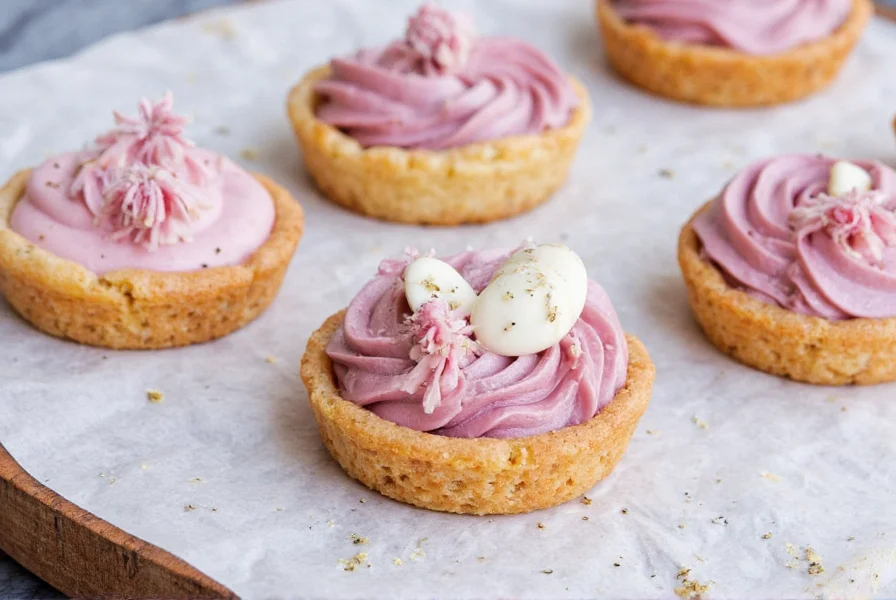Lavender spice is a culinary herb made from dried flower buds of the Lavandula angustifolia plant, specifically grown for safe consumption in food. It has a floral, sweet flavor with hints of citrus and mint, and is safe for use in cooking when labeled as culinary-grade. Whether you're a seasoned chef or new to herbs, this guide covers everything you need to know about using lavender spice effectively and safely.
Table of Contents
- What Exactly is Lavender Spice?
- Top 7 Practical Uses for Lavender Spice
- Buying Guide: How to Choose the Best Lavender Spice
- Flavor Pairings & Recipes to Try
- Safety Tips and Common Mistakes
- Frequently Asked Questions
- Final Thoughts
What Exactly is Lavender Spice?

When we say lavender spice, we're typically referring to culinary-grade dried lavender flowers—usually from the Lavandula angustifolia species. These tiny purple buds are packed with essential oils, giving them that signature floral aroma.
Unlike ornamental lavender found in gardens, culinary lavender is grown specifically for consumption. That means it's free from harmful pesticides and processed for safe use in food and beverages.
Quick Fact:
- Botanical name: Lavandula
- Common names: English lavender, true lavender, culinary lavender
- Flavor profile: Floral, slightly sweet, with hints of citrus and mint
Top 7 Practical Uses for Lavender Spice
If you thought lavender only belonged in soap or tea, think again! Here are seven ways to put this versatile spice to work in your kitchen and home:
- Bake Like a Pro: Add a pinch to sugar cookies, shortbread, or lemon cakes for a floral twist. Don't go overboard—it's strong!
- Lavender-Infused Honey: Heat honey with a teaspoon of dried buds for a luxurious topping on yogurt or toast.
- Cocktails with Class: Make homemade lavender syrup to add depth to gin cocktails or iced tea.
- Meat Marinades: Combine with rosemary, thyme, and olive oil for a herby rub on lamb or chicken.
- Dessert Sprinkle: Grind dried lavender with sugar for a beautiful finishing touch on macarons or panna cotta.
- Aromatic Oils: Infuse oils with lavender to create salad dressings with a unique edge.
- DIY Bath Salts (Bonus Non-Food Use): Mix with Epsom salts and essential oils for a soothing bath blend.

Buying Guide: How to Choose the Best Lavender Spice
Not all lavender is created equal—especially when it comes to what ends up in your food. Here's what to look for when shopping for high-quality lavender spice:
| Feature | Low-Quality Lavender | High-Quality Lavender |
|---|---|---|
| Source | Unclear origin, may be ornamental | Clearly labeled as culinary grade |
| Purity | Mixed with stems or fillers | Whole flower buds only |
| Smell | Dull, musty, or chemical-like scent | Strong, fresh, floral aroma |
| Packaging | Open bags or unclear storage info | Airtight packaging, often dark-colored to protect from light |
| Price | Too cheap to be good quality | Reasonably priced for a premium product |
Top Picks for Culinary Lavender Spices
- Sunny Valley Farms Organic Lavender
- Features: USDA certified organic, hand-harvested
- Best For: Baking, herbal teas, infused oils
- Occasion: Gourmet cooking, gift sets, DIY projects
- Herbal Haven Dried Lavender
- Features: Food-safe processing, pesticide-free
- Best For: Cocktails, desserts, aromatherapy blends
- Occasion: Everyday kitchen use, weekend baking
- Farm to Jar Culinary Lavender Blend
- Features: Custom blend with other spices for instant flavor boost
- Best For: Seasoning meats, savory dishes, marinades
- Occasion: Outdoor grilling, Mediterranean-inspired meals

Flavor Pairings & Recipes to Try
Lavender might seem like an unusual ingredient, but it plays well with others! Here's a handy list of complementary flavors and some recipe ideas to get you started.
Lavender Flavor Pairings
- Lemon
- Orange zest
- Honey
- Rosemary
- Thyme
- Vanilla
Try These Tasty Recipes
- Lavender Lemon Shortbread Cookies: A buttery base with a hint of lavender and zesty lemon glaze.
- Gin & Lavender Cocktail: Shake up a refreshing drink with lavender-infused simple syrup, gin, lime, and cucumber slices.
- Lamb with Lavender Herb Rub: Rub crushed lavender, garlic, rosemary, and olive oil onto a leg of lamb before roasting for a sophisticated Sunday roast.
- Lavender Crème Brûlée: Infuse the cream with lavender before baking, then top with a caramelized sugar crust.

Safety Tips and Common Mistakes
While lavender is generally safe to consume in small quantities, there are a few pitfalls to avoid:
Common Mistakes
- Using too much: Lavender has a strong flavor—start with a pinch!
- Choosing non-culinary varieties: Ornamental lavender may contain chemicals unsafe for eating.
- Inhaling too deeply while grinding: The potent oils can cause mild dizziness in sensitive individuals.
- Eating raw buds: While edible, they can be bitter or tough unless properly prepared.
Who Should Be Cautious?
- Pregnant women should avoid large amounts of lavender in food or supplements.
- People with allergies to plants in the Lamiaceae family (like mint) may react to lavender.

Frequently Asked Questions About Lavender Spice
What is the difference between culinary lavender and regular lavender?
Culinary lavender is specifically grown and processed for consumption, free from pesticides and chemicals. Regular ornamental lavender may contain substances unsafe for eating and is often less flavorful for culinary uses.
How much lavender should I use in recipes?
Start with small amounts - typically 1/4 to 1/2 teaspoon of dried culinary lavender per recipe. Lavender has a strong flavor that can easily overpower other ingredients if used excessively.
Can I grow my own lavender for cooking?
Yes! If you grow your own lavender for culinary use, make sure to choose a culinary variety like Lavandula angustifolia (English lavender), avoid using pesticides, and harvest the flowers when they're in full bloom but before they start to fade.
What does lavender taste like in food?
Lavender has a floral, slightly sweet flavor with subtle hints of citrus and mint. When used appropriately, it adds a sophisticated aromatic note without tasting soapy or perfume-like.
How should I store lavender spice to keep it fresh?
Store culinary lavender in an airtight container away from light and heat. Properly stored, it will maintain its flavor for 6-12 months. For longer storage, keep it in the freezer.
Why does my lavender recipe taste bitter?
Bitterness usually comes from using too much lavender or including the stems (which are more bitter than the flower buds). Always use culinary lavender flower buds only, and start with small amounts - you can always add more but you can't remove it once added.
Can I substitute fresh lavender for dried in recipes?
Yes, but use about three times the amount of fresh lavender compared to dried, as dried herbs are more concentrated. Fresh lavender works well in syrups and infusions but may not be as potent in baked goods.
Are there any health benefits to using lavender spice?
Lavender contains antioxidants and has been traditionally used to help with relaxation and digestion. While culinary amounts won't provide significant medicinal benefits, it's a flavorful way to add complexity to dishes without extra calories or sodium.
Final Thoughts
So there you have it—lavender spice isn't just for potpourri and dream catchers. With its complex flavor and versatility in both sweet and savory dishes, lavender spice deserves a spot in your spice rack. From subtle infusions to bold pairings, there's no shortage of creative ways to play with this aromatic herb.
Remember to always buy culinary-grade lavender, start with small amounts, and most importantly—have fun experimenting!
Now go forth and sprinkle a little lavender magic into your next meal!












 浙公网安备
33010002000092号
浙公网安备
33010002000092号 浙B2-20120091-4
浙B2-20120091-4